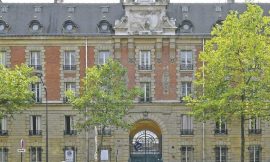Producing tea in Paris may seem like a crazy idea. Yet, it is the challenge that Gaëlle Rousseau, founder of the company “Jardins de thé”, is about to undertake. The entrepreneur, originally based on an eco-domain in Normandy, will invest 1,900 square meters on the site of l’Orée-du-Bois, in the 16th arrondissement of Paris.
She is one of the twelve winners – revealed this Tuesday – of the 5th edition of Parisculteurs, the program launched by the city to promote agriculture in urban areas. As such, the municipality grants her the concession of the Parisian land for the next twelve years.
“I will prepare the ground this week once we have finalized the administrative aspects with the City Hall,” says the tea producer. “What I want is to introduce Parisians to what tea is, how it is produced, and show all the work that goes behind it,” enthuses this former mission officer at the Ministry of Economy.
Gaëlle Rousseau plans to plant between 300 and 500 tea bushes on the l’Orée-du-Bois site.
Although tea is the most consumed beverage in the world after water, “we easily forget what real tea is,” adds the passionate tea producer, who already plans to sow between 300 and 500 camellia sinensis plants. “Not only because all green and black teas come from this plant species, but also because the l’Orée-du-Bois site is particularly suited for the development of tea,” rejoices Gaëlle Rousseau.
Expertises to identify the soils
The cultivator is eager to take possession of this “beautiful location” which “meets the expectations of tea cultivation”. To optimize it, she will keep six large fir trees on site, “because camellia is an understory plant. It needs shade and acidic soil.” Expertises have been conducted to identify the soils on this particularly limestone territory in Île-de-France.
Green and black teas are all produced from camellia sinensis, a tea plant that belongs to the shrub family.
The only downside is that tea plants also require a lot of humidity. “In Normandy, I never water the crops. We will have to see how to manage water responsibly in Paris. It’s something to invent, but what interests me is also to experiment,” enthuses Gaëlle Rousseau, confidently.
Parisculteurs’ calls for projects now every two years
The City of Paris is also confident. “There is no apprehension because all the projects awarded are decided by the jury, which provides its technical and professional point of view, for example, with the Banque des territoires and the Regional Directorate of Agriculture and Forestry (Draaf),” says Audrey Pulvar, deputy mayor in charge of sustainable food, agriculture, and short circuits.
However, some projects have a harder time emerging than others. “So I decided to extend the time between two Parisculteurs editions, which will now take place every two years to better support the winning project holders,” adds the elected official.
A rooftop terrace among the other winners
Among the other winners of Parisculteurs this year is a rooftop terrace project for the production of regional plants and artistic creation, in the 10th arrondissement. A one-hectare vegetable orchard is also expected to be established in Vitry-sur-Seine (Val-de-Marne), a partner city of the program.
“This new edition is in line with the direction of Parisculteurs, but many projects this year are underdeveloped or non-existent, such as Jardins de thé,” clarifies Audrey Pulvar. The rest of the winners will be announced this Tuesday, during a ceremony organized at the Paris City Hall.



